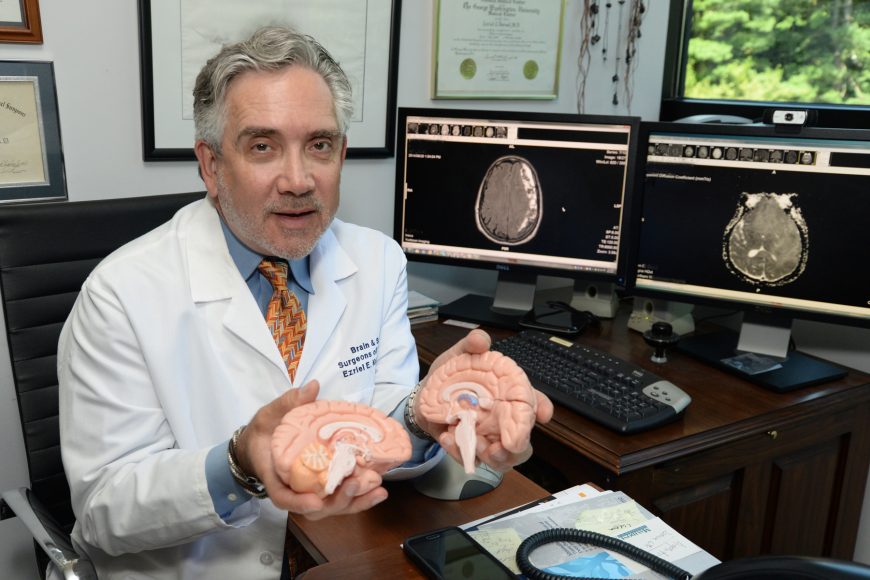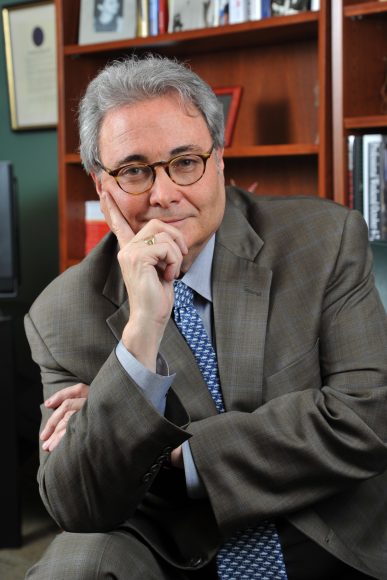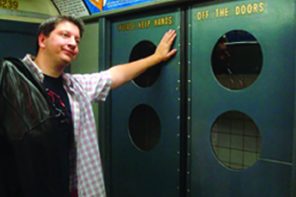Photographs courtesy Yaeger Public Relations
Neuroscience is having another big moment. Not a day goes by that there isn’t an article about the neurological applications of, well, almost anything. There’s the neuroscience of racism in the aftermath of Ferguson. (Supposedly, we’re hardwired for prejudice but can overcome it.) And the neuroscience of stress and success. (We can use our minds to de-stress and become our best selves. Duh.)
Then there’s neuroscience as “Star Trek,” boldly going where no man has gone before. In the future, we might not only be able to access lost memories, but the memories of others, feel the emotions of actors in our own bodies and communicate with the minds of the departed. It boggles the mind to think where the mind might venture.
But what about the current landscape of the brain? Where are the new and next frontiers? And what myths of the mind do we need to debunk once and for all? We turned to neurosurgeon Ezriel Kornel and psychologist Harris Stratyner for some answers and found that we don’t need seeming science fiction to be excited by what’s going on in brain research.
“In terms of medicine, what is critical is dementia,” says Kornel, a principal of Brain & Spine Surgeons of New York and director of the Institute for Neurosciences at Northern Westchester Hospital in Mount Kisco. “There’s dementia from Alzheimer’s disease and vascular dementia, which is related to strokes. That has declined considerably.”
Among the factors contributing to the decline are control of diet, cholesterol and high blood pressure, a decrease in smoking and an increase in exercise. Treatment of vascular dementia has also become more proactive, he adds, with the use of a stent, for example, to open a blocked basilar artery, which supplies blood to the brain.
While Alzheimer’s is trickier, Kornel says, “I’m very excited by significant research into certain proteins blocking the metabolism of proteins that then build up in the brain,” forming plaques and tangles that damage the brain’s synapses and cause the disease.
The key to unlocking these proteins is not far off, he says. In the meantime, neuroscientists can now at least more readily identify those who are at greater risk of Alzheimer’s by using genetic markers.
“With the genetic work that’s going on, it won’t be many years before we’ll be able to alter the genes of those individuals,” he says.
Kornel advocates a mind-body balance – physical exercise as well as reading, studying, playing games, constantly learning – to decrease our risk of Alzheimer’s. That’s easier said than done in our sedentary digital age. But even here, the computer can be an aid if we’re using it for study and video games that increase our skill.
“It’s a tool,” he says. “It’s how we use it.”
Treating mental illness
and addiction
As far as brain applications are concerned, the most important is the use of electrode implants for the management of pain and movement disorders such as Parkinson’s, says Kornel, in the vanguard of those physicians using minimally invasive surgery.
But, he adds, electrode implants have the most interesting potential for those suffering from refractory depression, for whom medication is not effective. Kornel isn’t talking about the old electric-shock therapy depicted in the movies but a safe, refined treatment that could alleviate certain forms of “a disease we haven’t completely understood.”
That’s where psychologist Stratyner comes in. With offices in Yonkers and on the Upper East Side, Stratyner, a clinical associate professor of psychiatry at the Icahn School of Medicine at Mount Sinai, is an expert in co-occurring disorders such as bipolar disorder and alcoholism, which he says is what Robin Williams suffered from. Stratyner also developed the technique of “Carefrontation,” in which addicts and those suffering from co-occurring disorders own their situations in an atmosphere of dignity and respect.
“What’s fascinating,” Stratyner says, “is we’re starting to understand so much more about the brain in terms of the neocortex, which is the most advanced part and makes up two-thirds of the brain and particularly the frontal lobe, which governs reasoning, impulse control, empathy, altruism and memory.”
The frontal lobe is a work in progress among those ages 14 to 26 who don’t realize the damaging effects that alcohol and drugs like marijuana can have on it.
“If the brain is the seat of our minds … then it’s also the seat of our spirituality,” says Stratyner, a contributor to the “PDR Guide to Pediatric & Adolescent Mental Health.” “There’s a lot we can do to get naturally high.”
Brain myths busted
Stratyner and Kornel say one of the biggest misconceptions about the brain is the notion of a right brain and a left one, which holds that the left hemisphere of the brain is analytical, logical, verbal and mathematical while the right hemisphere is spatial, visual, intuitive and emotional. The theory began to take shape in the mid-20th century with Caltech neuroscientist Roger W. Sperry’s research on severely epileptic patients, who had had the hemispheres of their brains separated in an effort to control their seizures. But the notion that the hemispheres might be two independent operators really took flight in the 1980s when it was applied to everything from art (Betty Edwards’ book “Drawing on the Right Side of the Brain”) to learning disabilities. It was not long before the advertising world picked up what was essentially a metaphor and ran with it – as in the 1982 Saab print ad campaign “a car for the left side of your brain, a car for the right side of your brain.” (Turns out it was the same Saab Turbo that was at once a sensible purchase and a thrill ride.)
While someone may be more analytical than intuitive, Kornel says, “in fact people do use both sides of their brain extensively. …Both sides have to interact.”
And that’s crucial as well as heartening, Stratyner says, because it means that “one area can take over for the one that’s been damaged.”
Another myth is that we only use a small portion of the brain, which is made up of millions of neurons. Granted, Kornel says, they’re not all in play at once. But many are. We still don’t much understand the leap from neuron activity to such phenomena as private thought. There’s much we have to learn about the interplay of the unconscious and conscious minds and the mind-body connection, he says.
What’s key here, Stratyner says, is that just because we have millions of neurons doesn’t mean we should waste them.
“Don’t gamble with the brain,” he says.
Instead, celebrate it for the unique organ it is, he says, for we are the only species with a brain engaged in the wondrous, poignant activity of trying to understand itself.






